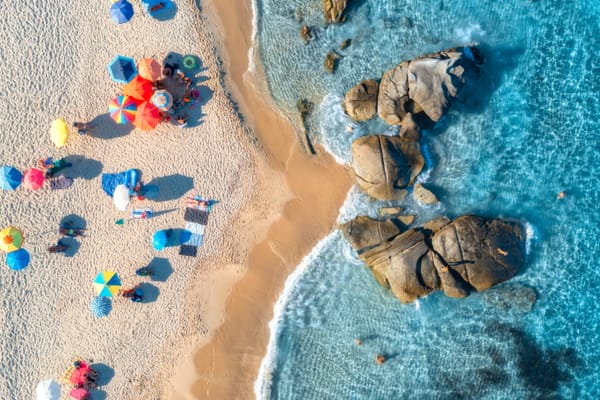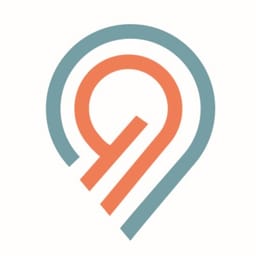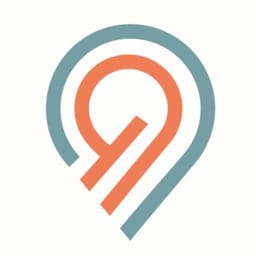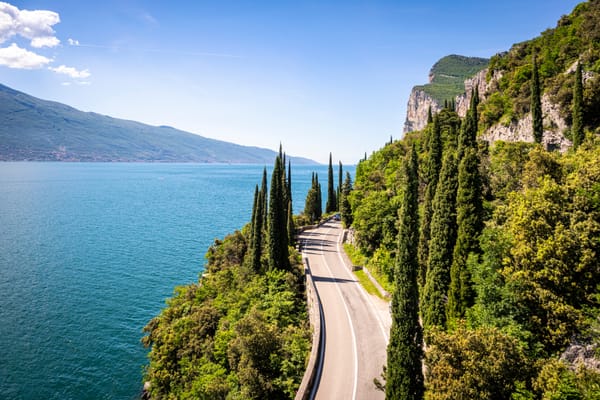This is your definitive guide to the best beaches in Italy. From the world-famous shores of the Amalfi Coast to the hidden coves of Sardinia, Italy's vast 7,500-kilometer coastline offers a seaside experience for every kind of traveler.
We're moving beyond the usual postcard pictures. This resource is crafted for the discerning, independent traveler who seeks not just a place to sunbathe, but a genuine connection with Italy's maritime culture. We will explore everything from exclusive beach clubs to untouched stretches of sand accessible only by boat.
Finding your perfect Italian beach: sandy shores or dramatic cliffs?
Italy's coastline is incredibly diverse. Are you dreaming of the soft, white sandy beaches that make Sardinia a Mediterranean paradise? Or do you prefer the dramatic, pebble-filled coves nestled beneath the cliffs of the Italian Riviera? We’ll guide you to the right destination for your personal style.
In this article:
September 20, 2025: this content has been updated for accuracy and freshness.
What to know before going to the beach in Italy
Before you pack your bags, it's essential to understand the unique culture and logistics of the Italian seaside. This will help you choose the right spots and make the most of your trip.
Free public beaches (spiaggia libera) vs. private beach clubs (stabilimento balneare)
This is the most important distinction on the Italian coast. Knowing the difference will shape your entire day.
- A spiaggia libera is a free public beach. Here, you can lay down your towel anywhere you like without charge. They are often more crowded and have fewer amenities.
- A stabilimento balneare (or beach club) is a private, pay-to-enter concession. For a daily fee, you get access to a clean, managed area with key amenities, which typically include:
- A reserved umbrella (ombrellone) and sun loungers (lettini)
- On-site restaurants and bars
- Clean restrooms and changing cabins
- Showers
For many Italians, spending a day at a stabilimento is a cherished summer ritual.
How to find the best and cleanest beaches: look for the Blue Flag
Keep an eye out for the Blue Flag (Bandiera Blu). This is a prestigious certification awarded only to beaches and marinas that meet stringent standards for water quality, environmental management, and safety. A Blue Flag is a reliable guarantee of a top-tier coastal environment.
The best time to visit the Italian coast
The main beach season in Italy runs from June to early September.
- Peak season: July and August are the busiest and most expensive months. The week of Ferragosto (August 15th)is the absolute peak, with most Italians on holiday.
- Best time to visit: For a more relaxed experience with fantastic weather and warm water, the best times are late May, June, and September.

The best beaches in Sardinia (Sardegna): a guide to paradise
Sardinia's coastline is legendary, often considered to have not just Italy's, but some of the world's most beautiful beaches. Its waters are a dazzling spectrum of turquoise and emerald, and its sands range from powdery white to soft pink. Here are three unmissable beaches that define the island's unique charm.
Cala Goloritzé (Baunei): the iconic hiking cove
A protected UNESCO World Heritage site, Cala Goloritzé is a true natural masterpiece on the wild Gulf of Orosei, famous for its limestone pinnacle and natural stone arch.
- The experience: This is a beach for adventurers. The reward is a swim in water so transparent it feels like a natural pool, teeming with marine life. It's an experience of pure, untouched nature.
- How to get there & practical tips: Access is limited to preserve its pristine state.
- By hiking: A challenging 90-minute hike down (and a much harder 2-hour hike back up) from the Supramonte plateau. Proper hiking shoes are a must.
- By boat: From nearby ports like Cala Gonone or Santa Maria Navarrese. Note that boats must stop 200 meters from the shore; you must swim the final stretch.
- Official website: goloritze.com
La Pelosa (Stintino): Europe's most famous turquoise water
La Pelosa is famous for its impossibly shallow, crystalline turquoise water, fine white sand, and an ancient watchtower that completes the view. It's often compared to the Caribbean.
- The experience: The sheer beauty of the water is unforgettable. However, its popularity means access is tightly controlled to protect the fragile ecosystem.
- How to get there & practical tips:
- Booking is mandatory during the high season (typically June 1st to October 31st). You must book your spot in advance.
- You must use a mat under your beach towel to protect the sand.
- The best time to visit is June or September to avoid the largest crowds.
- Booking La Pelosa for the 2025 season:
- Daily spots available: 1,500
- Cost: €3.50 per person (children under 12 are free but still need a reservation).
- How to book: Reservations must be made on the official website: spiaggialapelosa.it
- Important: You can book up to 48 hours in advance of your visit. Some local hotels may have pre-reserved spots.
- Entry: Access is controlled from 8:00 AM to 6:00 PM via a QR code from your reservation.
Spiaggia del Principe (Costa Smeralda): the Prince's emerald cove
Named for Prince Karim Aga Khan, this beach is the archetype of the Costa Smeralda: a perfect crescent of fine sand lapped by clear, emerald water and framed by pink granite.
- The experience: This beach embodies the chic, natural elegance of the Emerald Coast. It's a perfect spot for snorkeling around the rocky outcrops and relaxing in a glamorous setting.
- How to get there & practical tips:
- Access is via a 10-minute walk down a footpath from the paid parking area.
- Arrive very early in the morning (before 9:00 AM) in July and August to secure parking and a spot on the sand.
- Bring water and supplies, as facilities are limited.
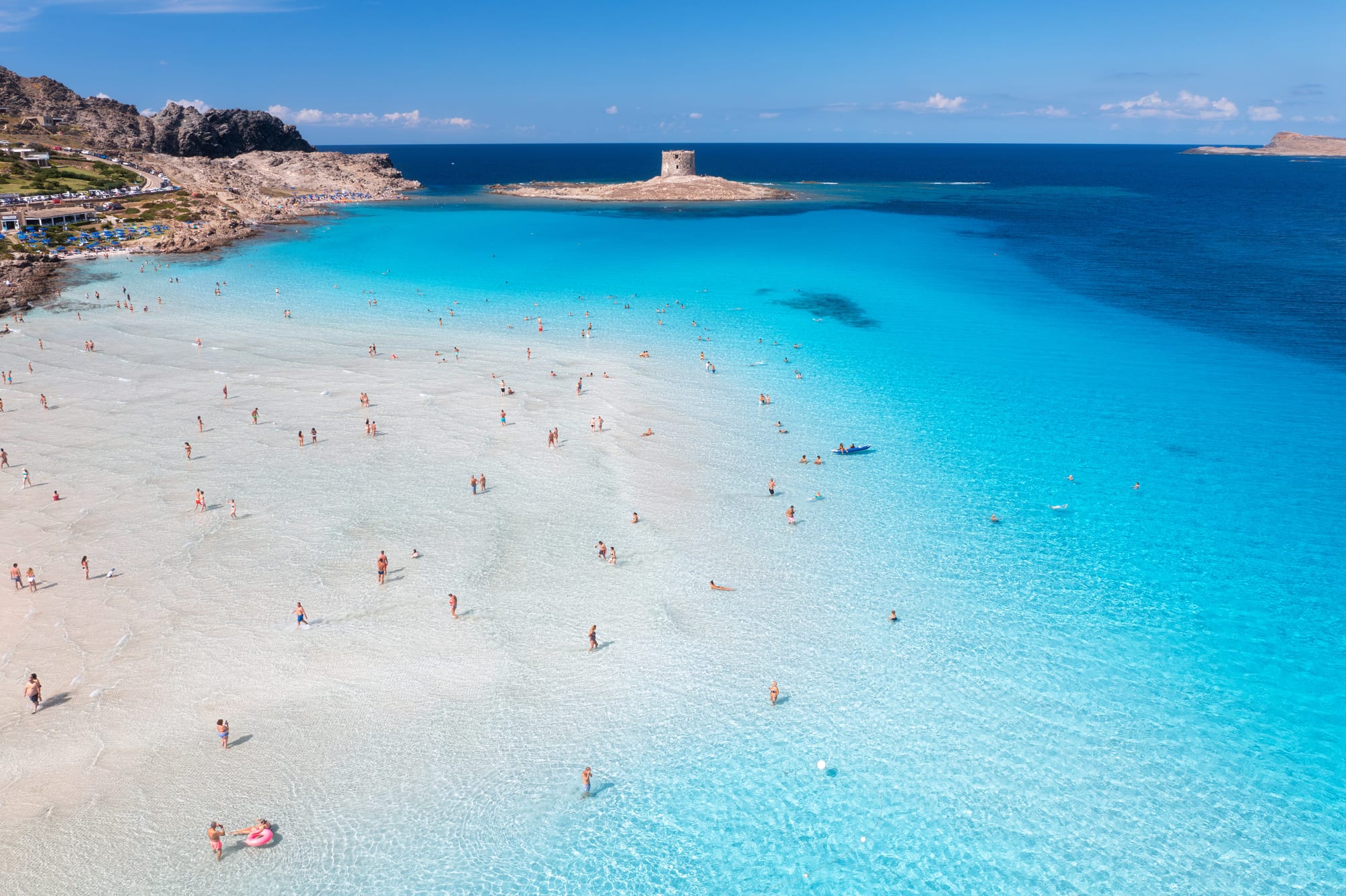
The best beaches in Sicily (Sicilia): a guide to the island's diverse coast
Sicily's coastline is as rich and varied as its history. Here, world-class beaches are often framed by ancient Greek ruins, volcanic landscapes, and vibrant fishing villages. This guide covers the island's most iconic coastal gems.
Spiaggia dei Conigli (Lampedusa): officially one of the world's best beaches
Consistently voted among the top beaches globally, the "Beach of the Rabbits" on the remote island of Lampedusa is a protected nature reserve famous for its nesting loggerhead sea turtles.
- The experience: Swimming here feels like a privilege. The bay is a vast, calm, natural swimming pool with shimmering turquoise water, creating an atmosphere of pure serenity.
- How to get there & practical tips: Lampedusa is accessible by flight or ferry from Sicily. The beach is a 15-20 minute walk from the road. Advance booking is mandatory and essential.
- Booking Spiaggia dei Conigli for the 2025 season:
- Season: Access is limited from June 9 to October 12, 2025.
- Visiting hours: The day is split into two shifts: Morning (8:30 AM - 1:30 PM) and Afternoon (2:30 PM - 7:30 PM).
- Visitor cap: A maximum of 550 people are allowed per shift.
- How to book: You must book your free pass online. We recommend booking as far in advance as possible.
- Official booking website: prenotazionespiaggiaconigli.it
Scala dei Turchi (Realmonte): Sicily's stunning white cliffs
Less a traditional beach and more a geological marvel, the Scala dei Turchi is a dazzling white marl cliff shaped like a giant staircase leading to the sea.
- The experience: A dream for photographers. You can walk on the smooth white rock or relax on the sandy beaches on either side. The color contrast between the white cliff and the blue sea is spectacular.
- How to get there & practical tips:
- Location: Located near Agrigento, it's a perfect stop after visiting the Valley of the Temples.
- IMPORTANT: Access to the cliff itself is often restricted to prevent erosion. Always check current local regulations before your visit and respect all barriers. Failure to do so can result in fines.
Cala Rossa (Favignana): a natural swimming pool in the Egadi Islands
On the island of Favignana, Cala Rossa isn't a sandy beach but a bay of flat rock shelves sloping into some of the most incredibly blue and clear water imaginable.
- The experience: This is a paradise for swimmers and snorkelers, not for sunbathers seeking sand. The surrounding former tuff quarries create a dramatic, almost lunar landscape.
- How to get there & practical tips:
- Getting to the island: Favignana is a short ferry or hydrofoil ride from Trapani or Marsala.
- Getting to the cove: It is best reached by boat to fully appreciate the scenery. Access by land is possible via a rugged path, so wear sturdy shoes.
- Pro-tip: Bring water shoes, as the rocks can be sharp.

The best beaches in Puglia (Apulia): a guide to Italy's "heel"
Puglia, the "heel" of Italy's boot, boasts two stunning and distinct coastlines: the dramatic, cliff-lined Adriatic to the east and the sandy, serene Ionian to the west. This guide explores two of its most famous beaches, each representing the unique soul of its region.
Baia delle Zagare (Gargano): the Adriatic's dramatic sea stacks
Located within the pristine Gargano National Park, Baia delle Zagare is renowned for its towering white sea stacks, known locally as faraglioni, that emerge from the turquoise sea.
- The experience: This is a breathtaking and romantic landscape. The beach, made of smooth white pebbles, is nestled between dramatic cliffs, creating an exclusive and intimate atmosphere.
- How to get there & practical tips:
- Access is limited: The beach is primarily accessed through two luxury hotels on the cliffs above. This preserves its tranquility.
- Public access: A small public section can be reached via a path, but spots are few. Check locally for availability, as rules can change.
- Best way to see it: The most reliable way to experience the bay is via a boat tour from Vieste or Mattinata, which offers spectacular views of the faraglioni and the coastline.
Pescoluse (Salento): the famous "Maldives of Italy"
This nickname says it all. Located on the Ionian coast in the heart of the Salento peninsula, Pescoluse is a long, idyllic stretch of powder-fine white sand and shallow, crystal-clear water.
- The experience: This is the ultimate relaxing beach destination and is incredibly family-friendly. The shallow water is safe for children, and the vast expanse of sand offers a mix of private beach clubs (stabilimenti) and large free sections (spiagge libere).
- How to get there & practical tips:
- Easy access: The beach is easily reachable by car, with numerous parking areas nearby.
- Crowds: It can get very busy in August, but its sheer size helps to absorb the crowds.
- Don't miss: The sunsets over the Ionian Sea are legendary here. It's the perfect spot for an evening aperitivo.
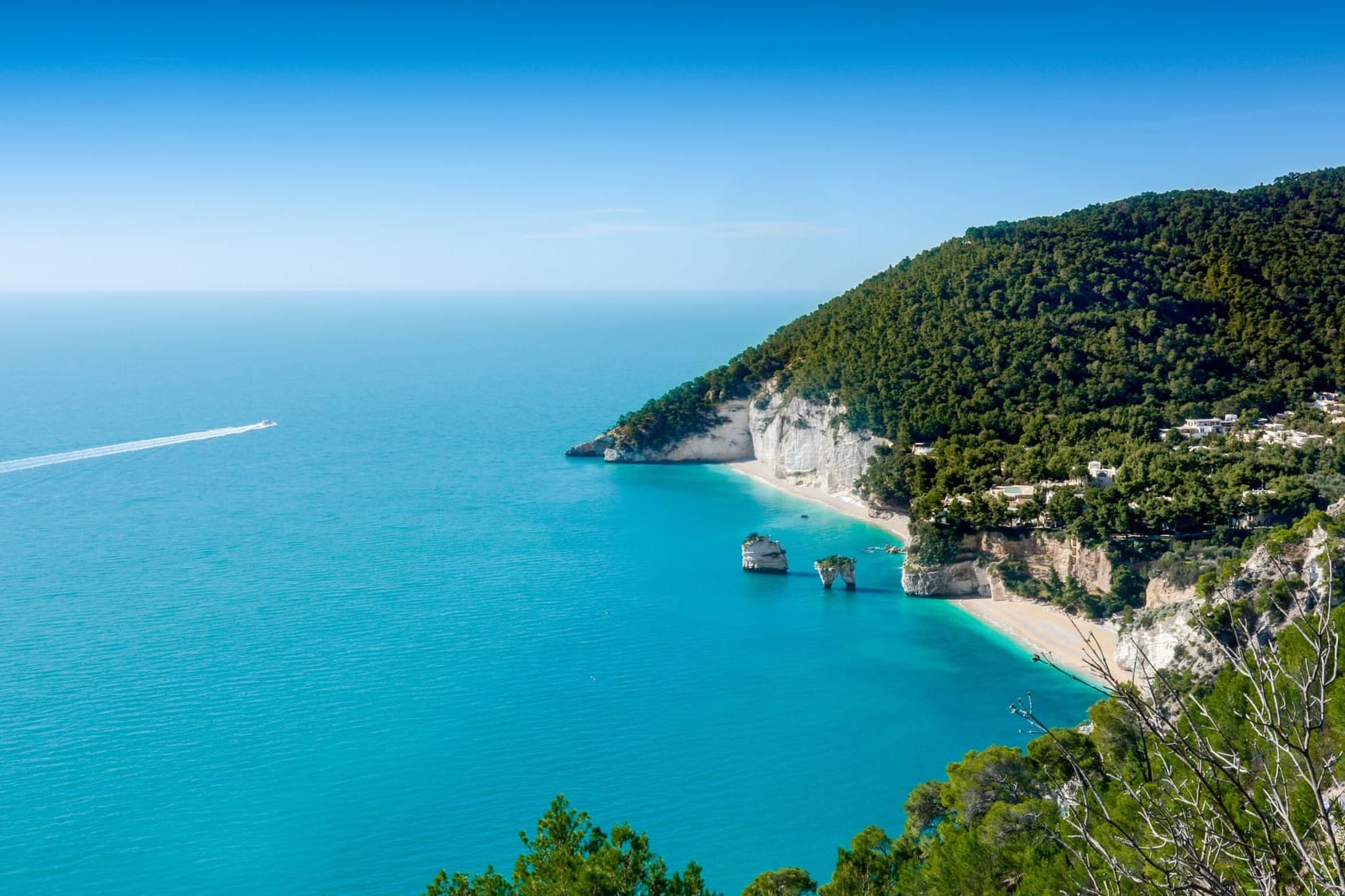
Italy's hidden gems: the best beaches in Tuscany, Liguria & Calabria
Beyond the famous islands, Italy's mainland hides coastal treasures for those willing to explore. This guide unveils three unforgettable beaches in regions often overlooked for their seaside charm.
Cala Violina (Tuscany): a musical beach in the Maremma
Tucked away in the Bandite di Scarlino nature reserve, Cala Violina is a unique beach named for the faint musical sound its quartz sand makes underfoot.
- The experience: This is an adventure into untouched nature. A pleasant walk or bike ride through a pine forest leads to a peaceful cove with incredibly clear water, far from any resort town buzz.
- How to get there & practical tips: Access is designed to preserve the beach's pristine state.
- Access: The beach is reached via a 4-kilometer trail from a limited-capacity car park.
- Facilities: There are no facilities on site. You must bring your own water, food, and beach umbrella.
- Booking is mandatory: To protect the environment, access is limited to 700 people per day.
- Cost: €1 per person to reserve a spot.
- Children: Ages 1-12 must be booked but are free. Children under 1 do not need a booking.
- Official website: Reservations must be made at calaviolinascarlino.it
San Fruttuoso (Liguria): the secret abbey on the sea
An enchanting and utterly unique location, San Fruttuoso is a tiny pebble beach dominated by a 10th-century abbey built right at the water's edge.
- The experience: It feels like stepping into a secret world. The bay is also home to the submerged bronze statue, "Christ of the Abyss," a famous destination for scuba divers.
- How to get there & practical tips: The beach's seclusion is part of its magic. It is not accessible by car.
- By Ferry: The easiest way is the regular ferry service from nearby towns like Camogli, Portofino, or Santa Margherita Ligure.
- By Hiking: For the adventurous, demanding (but beautiful) hiking trails connect San Fruttuoso to the Portofino peninsula's network.
Tropea (Calabria): jewel of the "Coast of the Gods"
The main beach of Tropea is legendary, set at the foot of a cliff topped by the historic town and the iconic Sanctuary of Santa Maria dell'Isola.
- The experience: A perfect blend of a beach day and cultural exploration. Swim in the clear Tyrrhenian Sea, then climb the steps to wander the charming streets of the old town.
- How to get there & practical tips:
- Easy Access: The beach is easily reached on foot from the town center.
- Services: It offers a mix of private lidos with full services and free public sections.
- Don't miss: Take a boat trip along the Costa degli Dei (Coast of the Gods) to explore nearby coves and the stunning cliffs of Capo Vaticano.
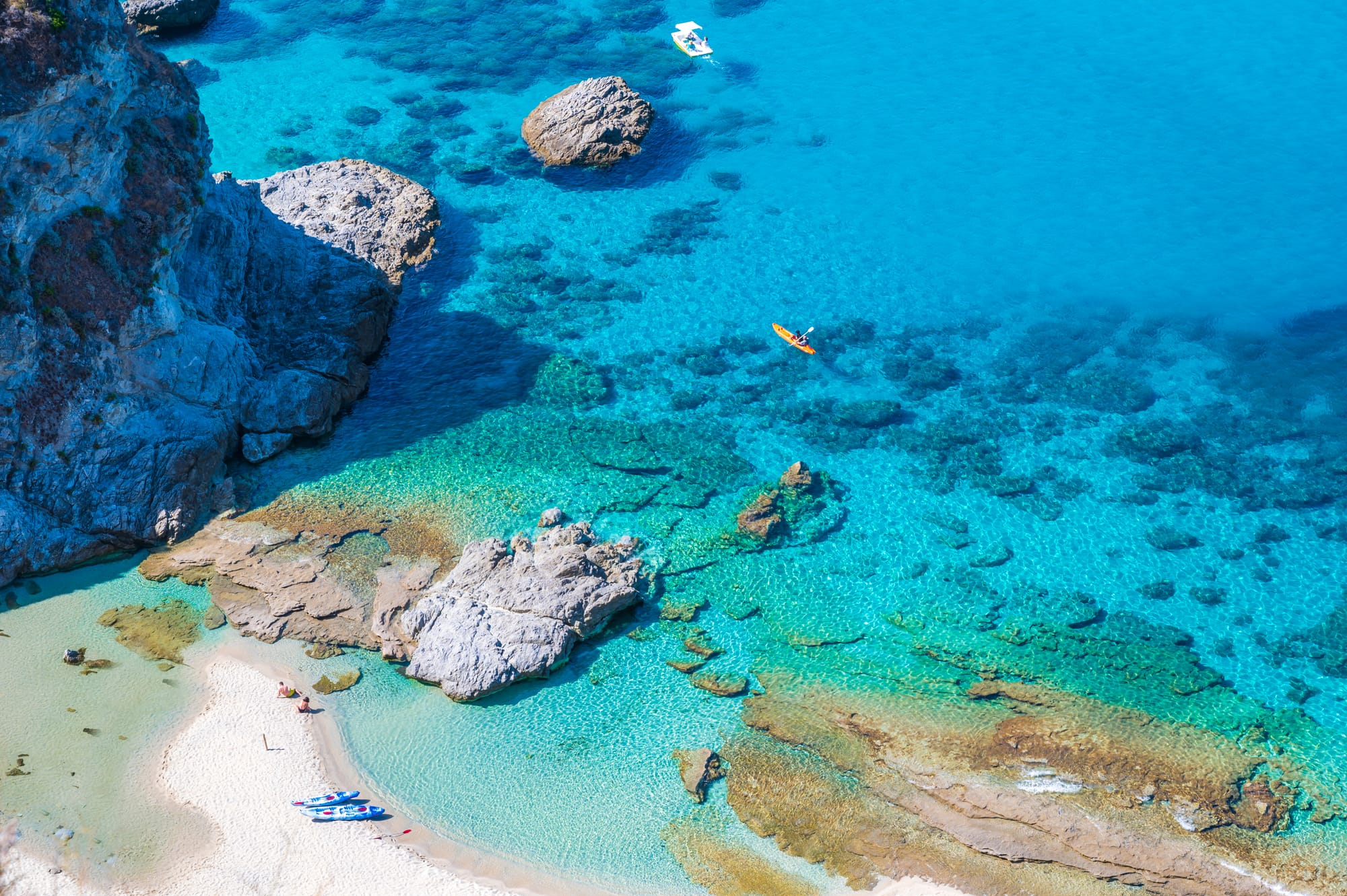
How to plan your Italian coast itinerary: a complete guide
The true art of crafting the perfect Italian coastal journey lies in seeing the beach not as a final destination, but as a spectacular centerpiece for a richer travel experience. Italy's 7,500 kilometers of shoreline are deeply interwoven with millennia of history, world-renowned gastronomy, and distinct regional cultures. Planning a trip that embraces this synergy is the key to an authentic and unforgettable coastal vacation in Italy.
Beyond the sand: combining culture and cuisine on the Italian coast
A day spent on the Italian coast should extend far beyond the water's edge. An effective itinerary pairs a morning swim with an afternoon of discovery and an evening of culinary delight. This approach turns a simple beach holiday into a deep cultural immersion.
For instance, a visit to the geological marvel of Scala dei Turchi in Sicily can be seamlessly combined with an exploration of the nearby Valley of the Temples, a magnificent UNESCO World Heritage site. Similarly, a relaxing day on the Tuscan shores of Cala Violina can be preceded by a visit to the ancient Etruscan tombs of Populonia or followed by a wine tasting in the Maremma countryside. The connection is even more profound with local cuisine. The fishing villages that dot the Ligurian coast offer the freshest seafood and pesto dishes imaginable after a boat trip to the secluded abbey of San Fruttuoso. A day on Puglia's Ionian coast, near the "Maldives of Italy" at Pescoluse, is incomplete without experiencing fresh-caught sea urchins (ricci di mare) or dining at a historic masseria (a fortified farmhouse) just a short drive inland. This is the essence of Italian travel: allowing the landscape to dictate the menu and the day's cultural pursuits.
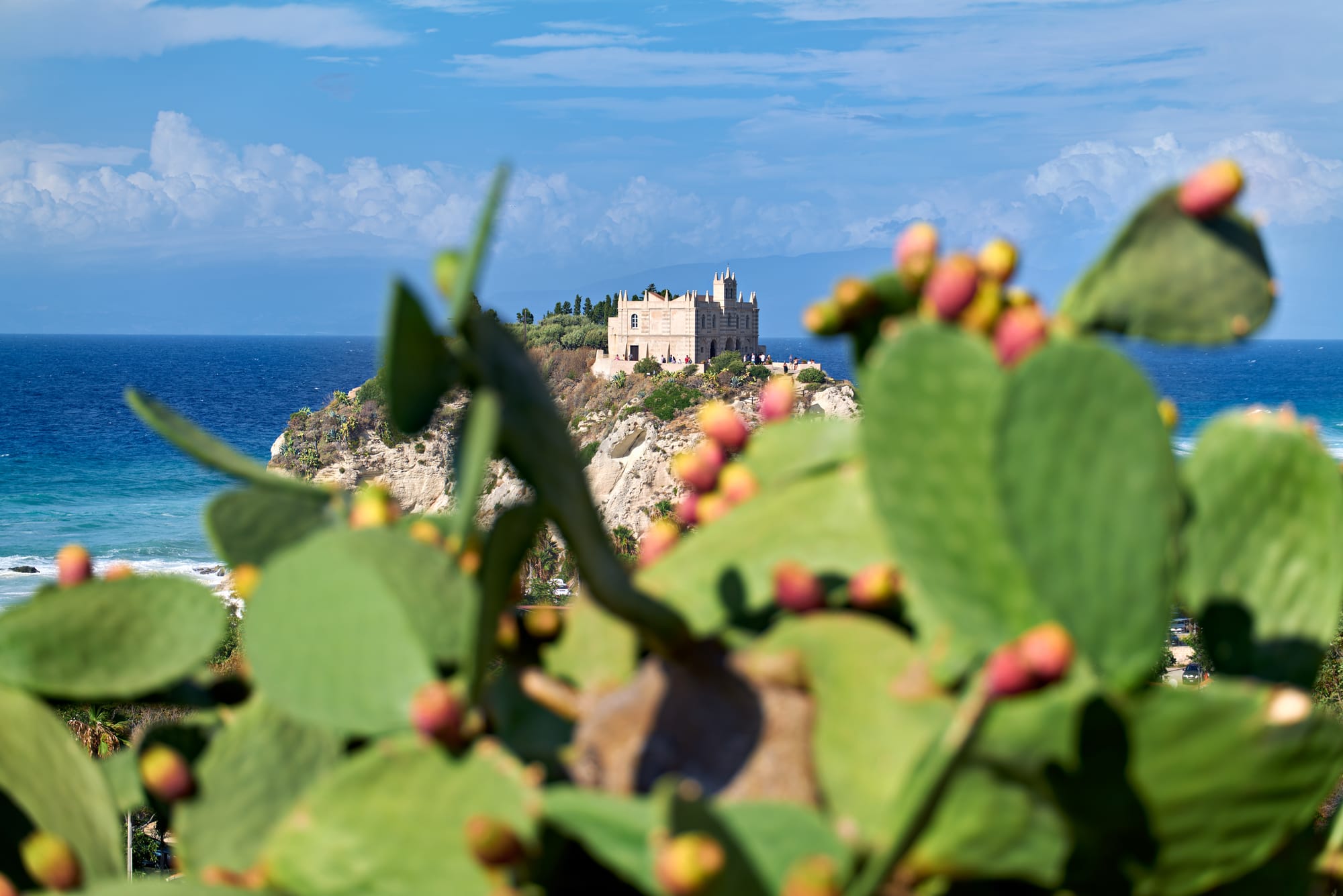
Protecting paradise: a guide to conscious travel in Italy
The unforgettable beauty of Italy's beaches is not guaranteed. The musical sands of Cala Violina, the protected marine areas, and the clear waters of the coast all depend on conscious travel to survive.
Visiting these treasures is a privilege, and protecting them is our shared responsibility. Here is how you can become a guardian of the Italian coast:
Your role as a conscious traveler Simple acts have a powerful impact. When you visit, commit to:
- Following all local rules and guidelines, especially in protected areas.
- Staying on official paths and boardwalks to prevent erosion.
- Minimizing your footprint by avoiding single-use plastics and creating less waste.
- Supporting the local economy through your choices in dining, shopping, and tours.
Traveling with this mindset ensures that the magic of the Italian seaside is preserved for everyone, forever.
Inspired to plan your journey? Find everything you need at:
- The ultimate guide to the Amalfi Coast
- The ultimate guide to the Cinque Terre
- The ultimate guide to Venice
- The ultimate guide to Florence
- The essential guide to Tuscany
Explore Italy like a local with our in-depth guides.

